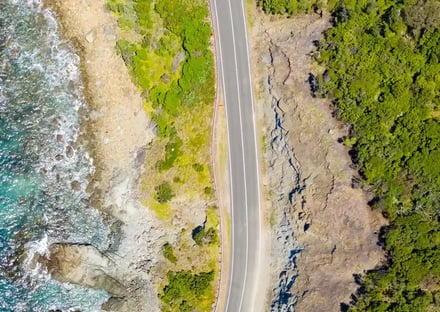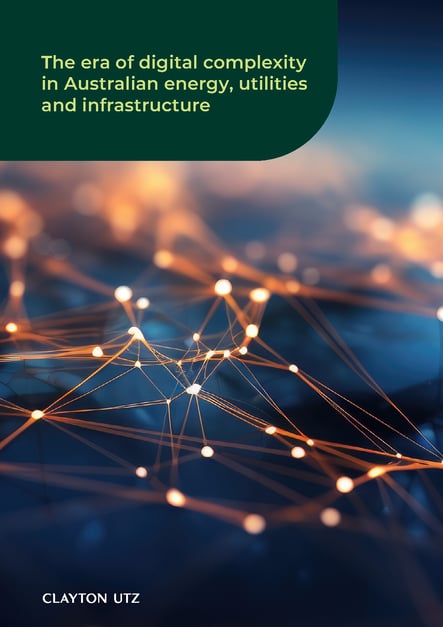The era of digital complexity in Australian energy, utilities and infrastructure

The era of digital complexity in Australian energy, utilities and infrastructure written by Clayton Utz in partnership with The Action Exchange, a thought leadership agency, explores the changing nature of procurement and contracting in increasingly digitally-connected infrastructure, energy and utilities projects. It argues that traditional risk and procurement models fall short in Australia’s new era of heightened regulatory demands, governance requirements and sophisticated cyber risks.
This report examines the convergence of these trends through the lens of three overarching complexity drivers - sentience, interoperability and security - to understand how asset owners and operators are grappling with them.
Key findings
- A new digital era: Australia’s infrastructure, energy, and utilities sectors are experiencing growing digital complexity, driven by new connected technologies. Traditional procurement and risk models often fail to account for the unique vulnerabilities and regulatory demands of modern infrastructure projects.
- Passive assets are giving way to smart systems: Internet-connected equipment is transforming asset management by enabling improved productivity, decision making, and cost savings. However, this shift also brings new legal, regulatory, and procurement challenges, particularly in cybersecurity and compliance.
- New layers of due diligence: The rise of connected technologies in infrastructure projects introduces additional due diligence considerations. Intellectual property, cyber resilience, critical IT systems, and data privacy now factor prominently in deal considerations alongside traditional factors such as competition and pricing.
- Interoperability across projects: As infrastructure assets become more connected and complex, ensuring interoperability across sectors and projects is crucial. However, the convergence of operational and information technologies introduces new digital risks, particularly third-party exposure to cyber threats. Many companies are balancing these risks by reducing data retention, though this could result in missed insights and opportunities.
- Growing cyber risks and regulatory response: National security threats targeting internet-connected Australian infrastructure are driving regulatory changes that increase compliance burdens for asset owners and operators. These burdens are expected to grow over time, making cyber resilience and recovery critical priorities for minimizing asset downtime.
Our PropTech and InfraTech specialists help guide asset owners, managers, and operators as they transform into data-driven, technology-powered businesses. Our cross-practice team works collaboratively to help clients navigate evolving risks, crafting tailored contracts and providing bespoke legal advice to ensure the smooth adoption and implementation of digitalised solutions.
